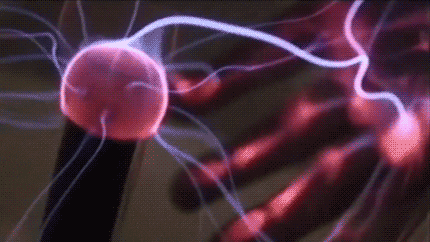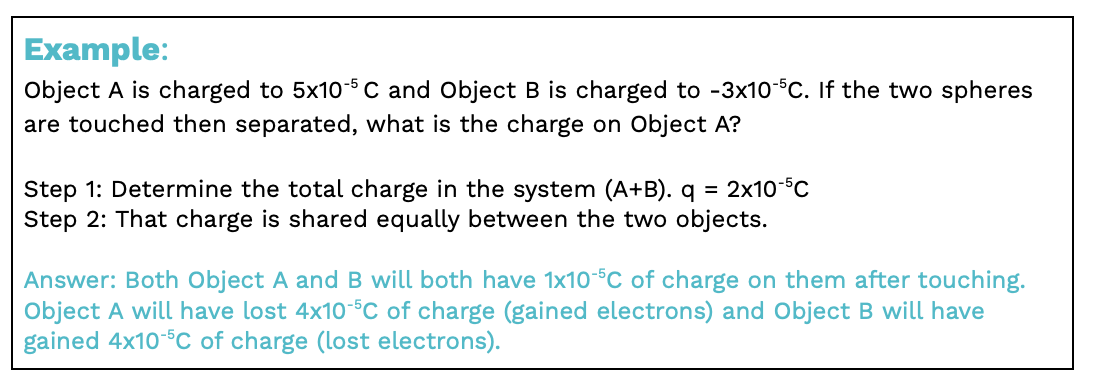Peter Apps
AP Physics 1 🎡
257 resourcesSee Units
As of 2021, College Board only tests Units 1-7 on the AP Physics 1 exam. This page's content will not be tested on the exam, but we kept it online for you all as a resource.
Enduring Understanding 5.A
Certain quantities are conserved, in the sense that the changes of those quantities in a given system are always equal to the transfer of that quantity to or from the system by all possible interactions with other systems.
Enduring Understanding 1.B
Electric charge is a property of an object or a system that affects its interactions with other objects or systems containing charge.
Essential Knowledge 1.B.1
Electric charge is conserved. The net charge of a system is equal to the sum of the charges of all the objects in the system.
Essential Knowledge 1.B.2
There are only two kinds of electric charge. Neutral objects or systems contain equal quantities of positive and negative charge, with the exception of some fundamental particles that have no electric charge.
Essential Knowledge 1.B.3
The smallest observed unit of charge that can be isolated is the electron charge, also known as the elementary charge.
What is Charge?
You may remember from a chemistry class discussing the idea that protons have a positive charge, and electrons have a negative charge. But what exactly is charge? Charge is a fundamental property of matter, like mass. The smallest amount of charge measurable is called the elementary charge (e) and is the charge found on a proton (+1e) or an electron (-1e).
In addition, we use a larger unit, the Coulomb (C) for describing large amounts of charge (1e = 1.6x10^-19 C). A key idea here is that although Coulombs of charge are very large, they must be equal to an integer value of elementary charges, since we can’t split an electron in half to get ½e.
When charge remains in a single location, it’s referred to as static charge. This is the reason you see or feel shocks and sparks on a dry winter’s day, or have a bad hair day due to static electricity.

Image courtesy of Giphy.
Charge that is allowed to flow in a loop is called a circuit. The rate of flow of charge through a loop is referred to as electric current. In the equation below, I is the current flowing, q is the amount of charge (in coulombs) and t is the time. The unit for current is the Ampere (A). For more information on circuits, and their behaviors check out the Unit 9 Study Guide.

Conservation of Charge
The conservation of charge is a fundamental principle of physics. Charge can’t be created or destroyed and in any interaction, the total amount of charge must be the same before and after.

🎥Watch: AP Physics 1 - Unit 8 Streams
Browse Study Guides By Unit
👟Unit 1 – Kinematics
🌀Unit 2 – Dynamics
🚀Unit 3 – Circular Motion & Gravitation
⚡️Unit 4 – Energy
⛳️Unit 5 – Momentum
🎸Unit 6 – Simple Harmonic Motion
🎡Unit 7 – Torque & Rotational Motion
💡Unit 8 – Electric Charges & Electric Force
🔋Unit 9 – DC Circuits
🔊Unit 10 – Mechanical Waves & Sound
📚Study Tools
🧐Exam Skills

Fiveable
Resources
© 2025 Fiveable Inc. All rights reserved.